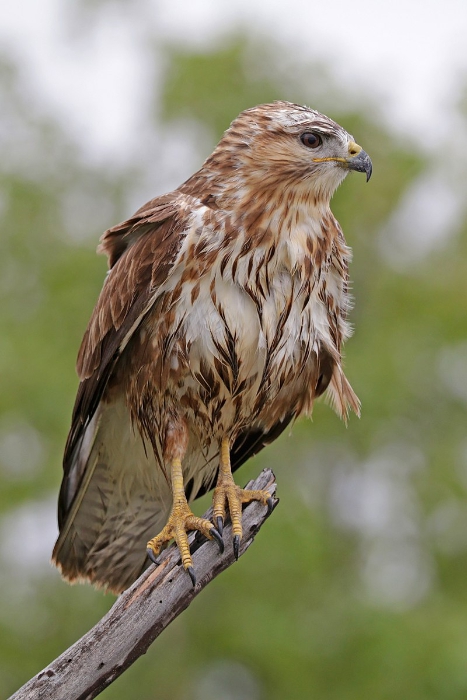Scientific name: Buteo buteo
Bird Family: Accipitridae
Appearance: Medium to large raptor with broad wings, a short neck, a medium-length, fan-shaped (when soaring) tail and yellow legs. Body colour is quite variable ranging from dark brown to very pale, but all have a pale band across the lower breast, dark wing tips and an off-white, densely barred tail. Males and females are similar while juveniles display streaking on the breast.
Size: Length 46 – 58 cm; wingspan 110 – 132 cm
Call: The Buzzard has a distinctive call which has been described as a loud, mewing ‘piiiyay’. It is usually given in flight and especially in spring.
Natural history: The Buzzard is now the most widespread and commonest bird of prey in Great Britain and can often be seen perching on fenceposts or pylons scanning the ground for prey. It breeds in forests or small woods and hunts over open farmland, meadows or marshes. Food items include voles, rabbits, birds, amphibians, insects and worms, they will also eat carrion.
Buzzards nest in trees or sometimes on a rocky crag or cliff. The nest is built by both birds and is constructed of branches, twigs, heather and other available material. The nest cup is quite shallow and is lined with green material immediately prior to egg laying, with further material added gradually until the young fledge.
The female lays one clutch of 2-4 white eggs a year in mid-April. The eggs have red and brown markings. She does most of the incubation which takes around 33-35 days for each successive egg. The chicks hatch at about two-day intervals.
Image by Charlesjsharp - Own work, from Sharp Photography, sharpphotography.co.uk, CC BY-SA 4.0

 English (United Kingdom)
English (United Kingdom)  Czech (Čeština)
Czech (Čeština)  Nederlands (nl-NL)
Nederlands (nl-NL)  Magyar
Magyar  Deutsch (Deutschland)
Deutsch (Deutschland)  Croatian (Hrvatski)
Croatian (Hrvatski)  Polski (PL)
Polski (PL)  Español (España)
Español (España)